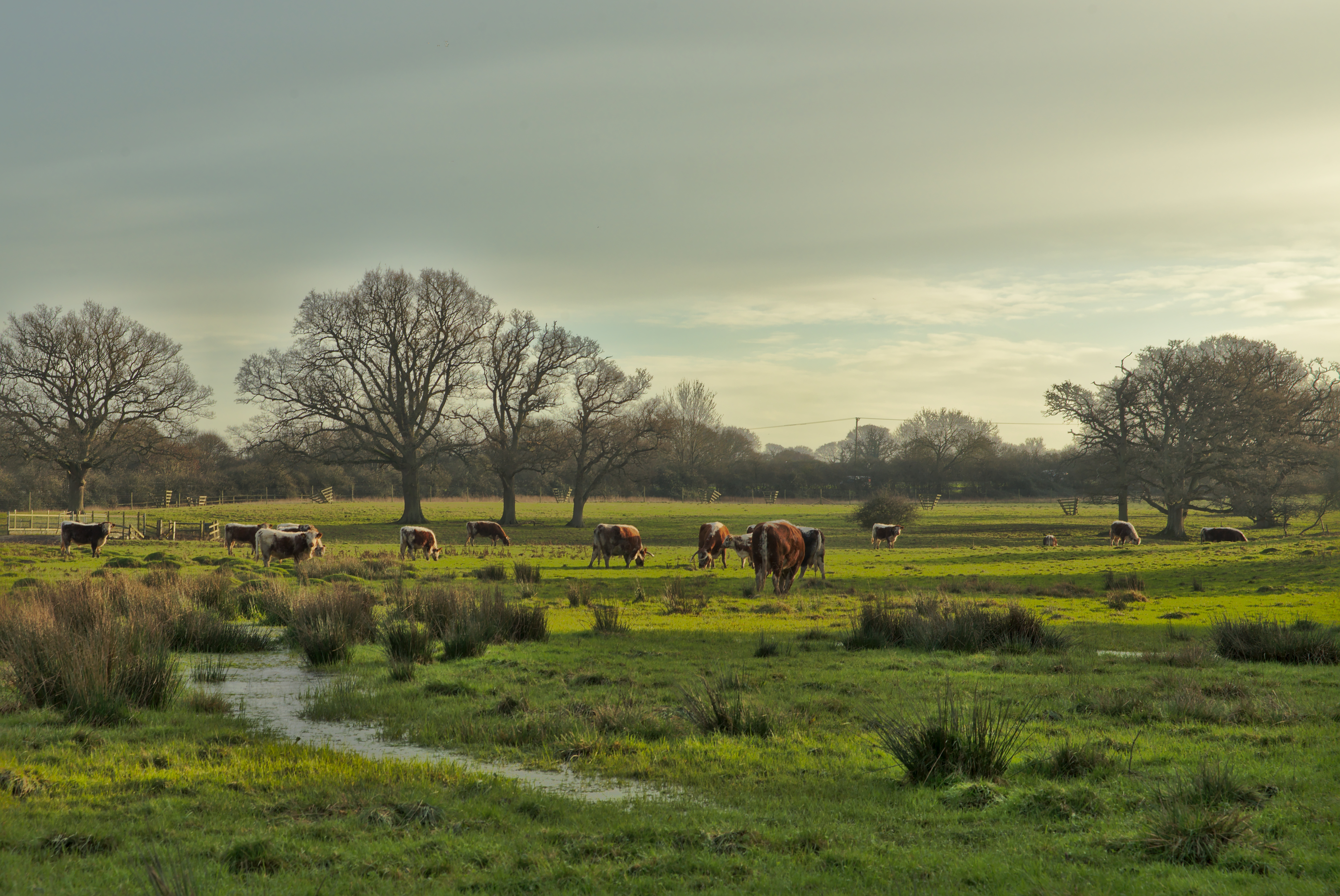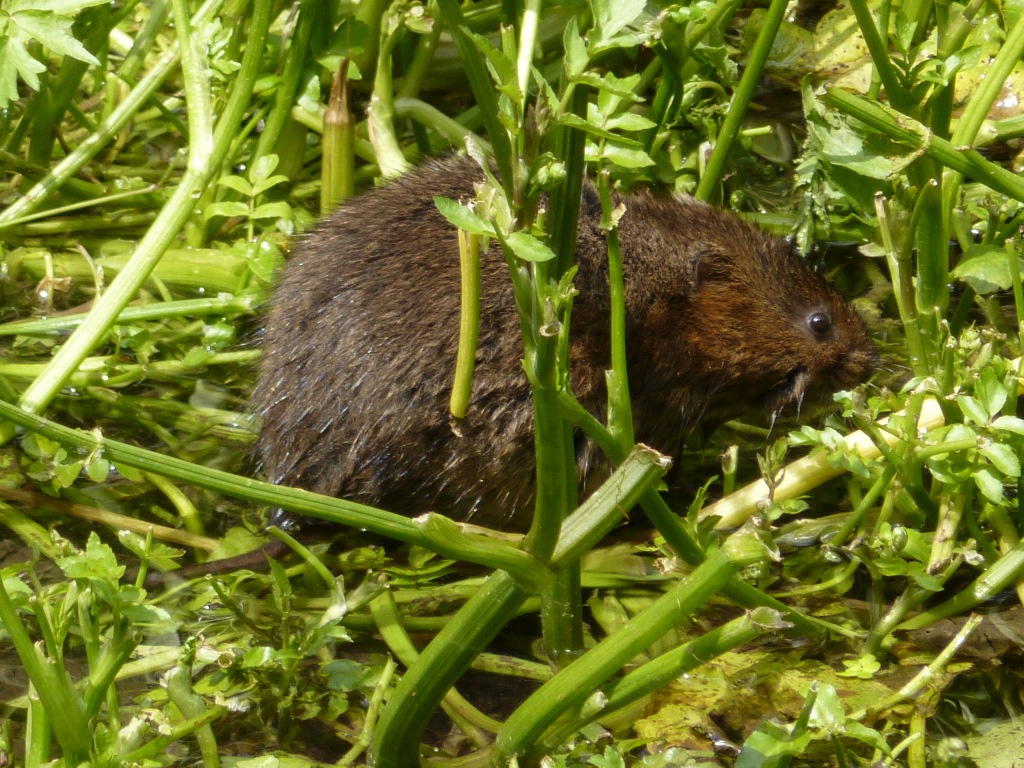|
Knepp Wildland
Knepp Wildland is the first major lowland rewilding project in England. It comprises of former arable and dairy farmland in the grounds of Knepp Castle, in West Sussex, England. Since 2000 when the conversion from intensive agriculture started the land now supports an 'extraordinary abundance' of many rare species including turtle doves, barbastelle bats, slow-worms and grass snakes; it has become a major nesting site for nightingales; a breeding hotspot for purple emperor butterflies; the site of the first white stork chicks raised in the wild in England for 600 years, and is home to the first beavers living in the wild in Sussex for 400 years. On 17 November 2021 the very rare Vagrant Emperor dragonfly (''Anax ephippiger'') was discovered in Pond Field. History After inheriting the 3,500 acre farm from his grandparents at the age of 21 in 1987, Sir Charles Burrell, 10th Baronet tried to run the farm profitably for 17 years. In 2000 he reluctantly decided to sell the d ... [...More Info...] [...Related Items...] OR: [Wikipedia] [Google] [Baidu] |
Knepp Castle
The medieval Knepp Castle (sometimes referred to as 'Old Knepp Castle', to distinguish it from the nearby 19th-century mansion) is to the west of the village of West Grinstead, West Sussex, England near the River Adur and the A24 (). The castle was probably founded by the Braose family in the 12th century. King John confiscated the castle along with the Braose lands in 1208. Knepp was used as a hunting lodge, and John visited the castle several times. He ordered its destruction in both 1215 and 1216 during the First Baron's War. Knepp Castle continued to be used into the 14th century and hosted reigning monarchs on several occasions. The castle eventually fell out of use and by the early 18th century was mostly destroyed. Later that century, stone was the castle was used to build a nearby road. The name is thought to come from the Old English word "cnæp", referring to the mound on which it stands. The land around the castle is now the site of Knepp Wildland. History Knepp ... [...More Info...] [...Related Items...] OR: [Wikipedia] [Google] [Baidu] |
Humphry Repton
Humphry Repton (21 April 1752 – 24 March 1818) was the last great English landscape designer of the eighteenth century, often regarded as the successor to Capability Brown; he also sowed the seeds of the more intricate and eclectic styles of the 19th century. His first name is often incorrectly rendered "Humphrey". Biography Early life Repton was born in Bury St Edmunds, the son of a collector of excise, John Repton, and Martha (''née'' Fitch). In 1762 his father set up a transport business in Norwich, where Humphry attended Norwich Grammar School. At age twelve he was sent to the Netherlands to learn Dutch and prepare for a career as a merchant. However, Repton was befriended by a wealthy Dutch family and the trip may have done more to stimulate his interest in 'polite' pursuits such as sketching and gardening. Returning to Norwich, Repton was apprenticed to a textile merchant, then, after marriage to Mary Clarke in 1773, set up in the business himself. He was not successf ... [...More Info...] [...Related Items...] OR: [Wikipedia] [Google] [Baidu] |
Black Stork
The black stork (''Ciconia nigra'') is a large bird in the stork family Ciconiidae. It was first described by Carl Linnaeus in the 10th edition of his ''Systema Naturae''. Measuring on average from beak tip to end of tail with a wingspan, the adult black stork has mainly black plumage, with white underparts, long red legs and a long pointed red beak. A widespread but uncommon species, it breeds in scattered locations across Europe (predominantly in Portugal and Spain, and central and eastern parts), and east across the Palearctic to the Pacific Ocean. It is a long-distance migrant, with European populations wintering in tropical Sub-Saharan Africa, and Asian populations in the Indian subcontinent. When migrating between Europe and Africa, it avoids crossing the Mediterranean Sea and detours via the Levant in the east or the Strait of Gibraltar in the west. An isolated, non-migratory, population occurs in Southern Africa. Unlike the closely related white stork, the black sto ... [...More Info...] [...Related Items...] OR: [Wikipedia] [Google] [Baidu] |
Environment Agency
The Environment Agency (EA) is a non-departmental public body, established in 1996 and sponsored by the United Kingdom government's Department for Environment, Food and Rural Affairs, with responsibilities relating to the protection and enhancement of the environment in England (and until 2013 also Wales). Based in Bristol, the Environment Agency is responsible for flood management, regulating land and water pollution, and conservation. Roles and responsibilities Purpose The Environment Agency's stated purpose is, "to protect or enhance the environment, taken as a whole" so as to promote "the objective of achieving sustainable development" (taken from the Environment Act 1995, section 4). Protection of the environment relates to threats such as flood and pollution. The vision of the agency is of "a rich, healthy and diverse environment for present and future generations". Scope The Environment Agency's remit covers almost the whole of England, about 13 million h ... [...More Info...] [...Related Items...] OR: [Wikipedia] [Google] [Baidu] |
River Adur
The Adur ( or ) is a river in Sussex, England; it gives its name to the Adur district of West Sussex. The river, which is long, was once navigable for large vessels up as far as Steyning, where there was a large Saxon port, but by the 11th century the lower river became silted up and the port moved down to the deeper waters at the mouth of the river in Shoreham-by-Sea. Watercourse The Adur begins as two separate branches, the western Adur and the eastern Adur, which meet west of Henfield. The western Adur rises at Slinfold from where it flows around Coolham and then through Shipley, where it meets Lancing Brook and flows on to West Grinstead and Knepp Castle. The western Adur is tidal as far north as Bines Bridge near Bines Green, south of West Grinstead. The eastern Adur rises at Ditchling Common, in East Sussex, from where it crosses into West Sussex and meets Herrings Stream at Twineham (). At Shermanbury, the eastern Adur is fed by the Cowfold Stream. The Normal Ti ... [...More Info...] [...Related Items...] OR: [Wikipedia] [Google] [Baidu] |
United Kingdom Biodiversity Action Plan
The United Kingdom Biodiversity Action Plan or (UK BAP) was the UK government's response to the Convention on Biological Diversity, opened for signature at the Rio Earth Summit in 1992. The UK was the first country to produce a national Biodiversity Action Plan. It was published in 1994 and created action plans for priority species and habitats in the UK that were most under threat so as to support their recovery. Purpose The UK Biodiversity Action Plan summarised the most threatened or rapidly declining biological resources of the United Kingdom, and gave detailed plans for their conservation. Individual 'Action Plans' were provided for these habitats and species, and a reporting mechanism was established to demonstrate how the UK BAP was contributing to the United Kingdom's commitment to help reduce or halt the significant losses in global biodiversity, highlighted by the international Convention on Biological Diversity. The original publication included action plans for 45 habi ... [...More Info...] [...Related Items...] OR: [Wikipedia] [Google] [Baidu] |
Countryside Stewardship Scheme
The Countryside Stewardship Scheme was originally an agri-environment scheme run by the United Kingdom Government set up in 1991. In its original form it expired in 2014. It was relaunched for the Rural Development Programme England (RDPE) 2014-2020 with £3.1bn of government subsidy for agriculture and forestry, replacing the previous Environmental Stewardship scheme. Countryside Stewardship: *will contribute around £900 million to help protect and improve our environment. *will be open to all eligible farmers, foresters and land managers *is a competitive targeted scheme, with grants awarded to those who will make the biggest improvements in their local area. *replaces Environmental Stewardship (ES), the English Woodland Grant Scheme (EWGS) and capital grants from the Catchment Sensitive Farming (CSF) programme. Forestry Commission and Natural England will jointly delivery Countryside Stewardship. Natural England will broadly lead on the set up and delivery of transactional serv ... [...More Info...] [...Related Items...] OR: [Wikipedia] [Google] [Baidu] |
Tarpan
The term tarpan (''Equus ferus ferus'') refers to free-ranging horses of the Russian steppe from the 18th to the 20th century. It is generally unknown whether those horses represented genuine wild horses, feral domestic horses or hybrids. The last individual believed to be a tarpan died in captivity in the Russian Empire during 1909. Beginning in the 1930s, several attempts were made to develop horses that looked like tarpans through selective breeding, called "breeding back" by advocates. The breeds that resulted included the Heck horse, the , and a derivation of the Konik breed, all of which have a primitive appearance, particularly in having the grullo coat colour. Some of these horses are now commercially promoted as "tarpans", although such animals are only domestic breeds and not the wild animal themselves. Name and etymology The name "tarpan" or "tarpani" derives from a Turkic language ( Kazakh or Kyrgyz) name meaning "wild horse". The Tatars and the Cossacks distingui ... [...More Info...] [...Related Items...] OR: [Wikipedia] [Google] [Baidu] |
Aurochs
The aurochs (''Bos primigenius'') ( or ) is an extinct cattle species, considered to be the wild ancestor of modern domestic cattle. With a shoulder height of up to in bulls and in cows, it was one of the largest herbivores in the Holocene; it had massive elongated and broad horns that reached in length. The aurochs was part of the Pleistocene megafauna. It probably evolved in Asia and migrated west and north during warm interglacial periods. The oldest known aurochs fossils found in India and North Africa date to the Middle Pleistocene and in Europe to the Holstein interglacial. As indicated by fossil remains in Northern Europe, it reached Denmark and southern Sweden during the Holocene. The aurochs declined during the late Holocene due to habitat loss and hunting, and became extinct when the last individual died in 1627 in Jaktorów forest in Poland. The aurochs is depicted in Paleolithic cave paintings, Neolithic petroglyphs, Ancient Egyptian reliefs and Bronze ... [...More Info...] [...Related Items...] OR: [Wikipedia] [Google] [Baidu] |
Frans Vera
Dr Frans Vera (born Franciscus Wilhelmus Maria Vera; Amsterdam, 4 June 1949) is a Dutch biologist and conservationist. He has played a key part in devising the current ecological strategy for the Netherlands. He has hypothesised that Western European primeval forests at the end of the Pleistocene epoch did not consist only of "closed-canopy" high-forest conditions, but also included pastures combined with forests, a hypothesis variously addressed as the Vera hypothesis or the wood-pasture hypothesis. Biography At a young age, Vera was fascinated by books by the Dutch writer, publisher and photographer A.B. Wigman (1891–1972) such as ' (1954), and by the Dutch naturalist, cineaste, photographer, journalist and writer Jan P. Strijbos (1891–1983). His teacher at primary school also stimulated his interest in nature. At high school he worked with Paul Opdam (born 1949) to search in the Utrechtse Heuvelrug moraine for the few remaining nests of the Northern goshawk, goshawk. He c ... [...More Info...] [...Related Items...] OR: [Wikipedia] [Google] [Baidu] |

.jpg)






